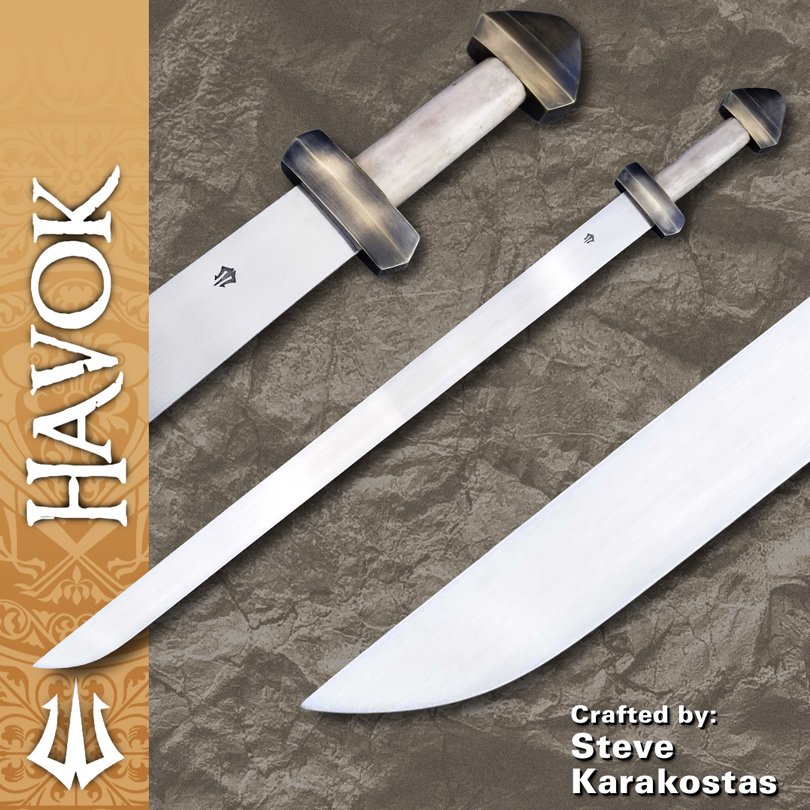“HAVOK”
VIKING SWORD
Single Edge

VIKING SWORD
Single Edge

Overall Length
36.5”
Blade Length
29.5”
Handle
Elk Antler
Hilt Fittings
Brass with Distressed Patina
Hilt Type
Petersen Type B
Material
5160 Steel
Thickness
0.25
Width
1.8”
Blade Type
Geibig Type 14
Point of Balance
4.5” from Guard
Total Weight
3lb 6oz
Havok was inspired by the single edged Viking Sword used in Norway.
Single edge swords were used in the early Viking age for raiding, close combat, protection from invading armies, and even, on occasion, duels of honour!
In large scale combat, swords were generally only used as a backup weapon or for close quarters combat.
Long range weapons such as spears would be preferred, even axes. Swords would be used if a group had broke formation and couldn’t keep the enemy at range, or if the primary long-range weapon was dropped or damaged.
Most Viking swords from the 9th & 10th centuries were double edged. They usually had a fuller down the centre of the blade to make the sword lighter for faster wielding in combat.

My client wanted this Rare type of Viking sword but didn’t want it 100% historically accurate. He wanted distressed/aged brass for the guard and pommel, and elk antler rather than traditional wood wrapped in leather for the handle. Also, he didn’t want a fuller, opting instead for a heavier sword.
He wanted a Sword that no one else had, one that was truly unique.

I went with a Petersen Type B hilt as it was very commonly used.
The Geibig type 14 blade usually has a wide shallow fuller that's almost the entire length of the blade, but I decided to do something a little different and not include it on this project.
As a result, the sword is heavier and wields slower, yet more powerful strikes.